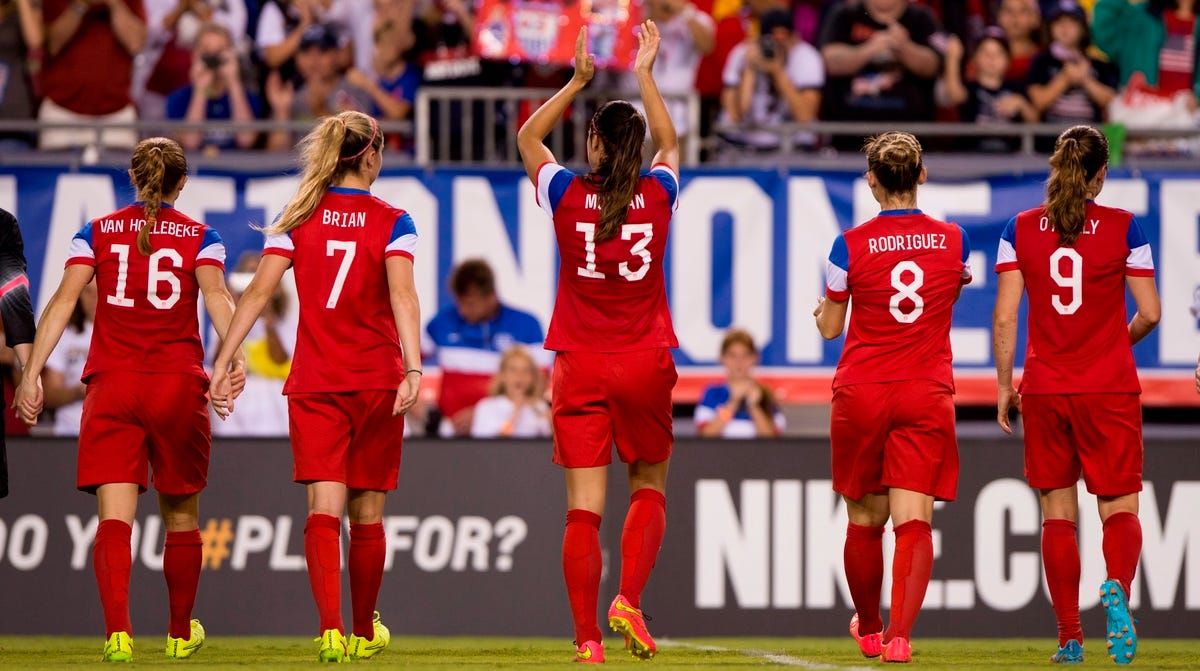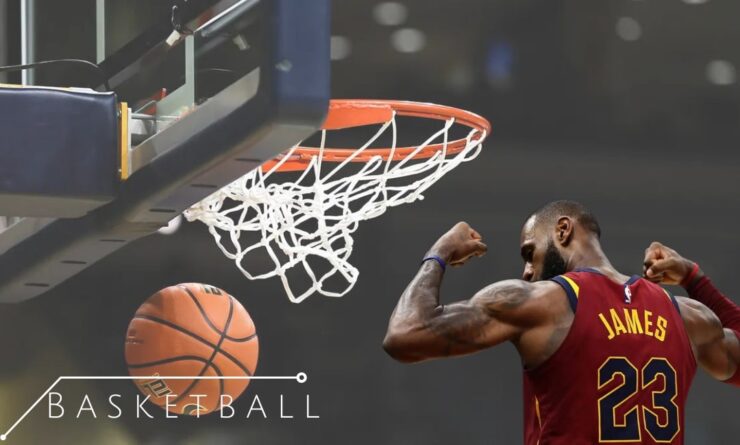The Global Spectrum of Sports: A Comprehensive Overview
Introduction
Sports serve as a universal language that transcends geographical boundaries, cultural differences, and societal divisions. From the ancient Olympic Games to the modern-day FIFA World Cup, sports have been an integral part of human civilization, fostering camaraderie, competition, and entertainment. In this comprehensive exploration, we delve into the diverse world of sports, examining its historical significance, cultural impact, and contemporary relevance across different regions of the globe.
Historical Evolution of Sports
The origins of sports can be traced back to ancient civilizations such as ancient Greece, where athletic competitions like the Olympics were held to honor gods and showcase physical prowess. Over millennia, sports evolved, with various cultures developing their own unique games and competitions. From the martial arts of Asia to the ball games of Mesoamerica, sports became deeply intertwined with cultural identity and tradition. The Industrial Revolution of the 18th and 19th centuries led to the codification and globalization of sports, laying the groundwork for modern sporting events and organizations.
The Influence of Culture and Tradition
Culture plays a pivotal role in shaping the landscape of sports around the world. In some regions, traditional sports hold significant cultural and symbolic value, serving as a means of preserving heritage and fostering community cohesion. For example, Sumo wrestling in Japan is not merely a sport but a reflection of Japanese tradition and values. Similarly, sports like Kabaddi in South Asia or Gaelic football in Ireland are deeply rooted in cultural practices and historical narratives. Furthermore, cultural factors often influence the popularity and participation levels in certain sports, leading to a diverse array of athletic pursuits across different societies.
Globalization and Commercialization
The advent of globalization in the 20th century accelerated the spread of sports across continents, facilitated by advancements in technology, transportation, and media. Major sporting events such as the FIFA World Cup, the Olympics, and the Super Bowl became global spectacles, attracting billions of viewers worldwide. Alongside globalization, the commercialization of sports transformed them into multi-billion dollar industries, with lucrative broadcasting deals, sponsorships, and endorsements driving revenue streams. Athletes became household names, transcending the realm of sports to become global icons and influencers.
Football: The Global Game
Football, or soccer, stands as the most popular and widely played sport on the planet, with an estimated 4 billion fans spanning across all continents. Its simplicity, accessibility, and universal appeal have made it a unifying force, bringing together people from diverse backgrounds and cultures. From the streets of Rio de Janeiro to the stadiums of Barcelona, football has the power to evoke passion, pride, and fervent devotion. The FIFA World Cup, held every four years, captivates audiences worldwide, transcending linguistic, cultural, and political barriers to unite nations in the spirit of competition.
Basketball: A Cultural Phenomenon
While football reigns supreme globally, basketball has emerged as a cultural phenomenon, particularly in the United States and parts of Asia. Originating in Springfield, Massachusetts, in the late 19th century, basketball quickly gained popularity and spread internationally. The National Basketball Association (NBA), with its roster of superstar athletes and high-octane games, has become a global powerhouse, attracting fans from every corner of the globe. In China, basketball enjoys immense popularity, with millions of enthusiasts idolizing NBA stars like LeBron James and Stephen Curry.
Cricket: A Passion in the Commonwealth
Cricket holds a special place in the hearts of millions, particularly in countries of the British Commonwealth such as India, Pakistan, Australia, and England. With its rich history dating back to the 16th century, cricket evolved from a leisurely pastime to a fiercely competitive sport with a massive following. The Indian Premier League (IPL), a professional Twenty20 cricket league in India, has revolutionized the sport, blending athleticism with entertainment and attracting top talent from around the world. Cricket’s cultural significance is evident in the fervent support it garners during international tournaments like the ICC Cricket World Cup.
Combat Sports: Tradition and Discipline
Combat sports such as boxing, wrestling, and martial arts embody the ethos of discipline, courage, and honor. These sports have deep roots in ancient civilizations and have evolved into modern-day spectacles of athleticism and skill. Boxing, often dubbed the “sweet science,” has produced legendary figures like Muhammad Ali, whose charisma and talent transcended the sport. Mixed Martial Arts (MMA), with organizations like the Ultimate Fighting Championship (UFC), has surged in popularity, captivating audiences with its blend of striking and grappling techniques. Traditional martial arts such as karate, judo, and taekwondo continue to thrive as both competitive sports and forms of self-defense.
Emerging Trends and Innovations
The world of sports is constantly evolving, driven by technological advancements, changing consumer preferences, and societal trends. Esports, competitive video gaming, has emerged as a global phenomenon, attracting millions of viewers and offering lucrative opportunities for players and sponsors alike.
The rise of wearable technology and data analytics has revolutionized athlete performance and training methods, providing insights that were previously unimaginable. Additionally, sports diplomacy, the use of sports as a tool for fostering international relations and diplomacy, has gained traction as governments and organizations recognize its potential for promoting peace and cooperation.
Challenges and Controversies
Despite its many virtues, the world of sports grapples with various challenges and controversies. Issues such as doping, corruption, and match-fixing tarnish the integrity of sports and undermine fair competition. Gender inequality persists in many sports, with disparities in pay, media coverage, and opportunities for female athletes. Furthermore, the commercialization of sports has led to concerns about the commodification of athletes and the prioritization of profit over principles. Addressing these challenges requires concerted efforts from stakeholders across the sports ecosystem, including athletes, governing bodies, sponsors, and fans.
Sports serve as a powerful medium for human expression, bringing together individuals from diverse backgrounds in the pursuit of excellence, camaraderie, and shared passion. From the ancient Olympics to the modern-day mega-events, sports have transcended geographical boundaries and cultural divides, leaving an indelible mark on humanity’s collective consciousness. As we navigate the complexities of the 21st century, the world of sports continues to evolve, presenting new opportunities and challenges that shape our understanding of athleticism, identity, and global interconnectedness.
In the 21st century, the world of sports has become more interconnected and accessible than ever before, thanks to advancements in technology and communication. Social media platforms have democratized the dissemination of sports content, allowing fans to engage with their favorite athletes and teams on a global scale. Virtual reality and augmented reality technologies offer immersive experiences, blurring the lines between physical and digital realms.
Moreover, sports have become a catalyst for social change and advocacy, with athletes using their platforms to raise awareness about issues such as racial injustice, gender equality, and mental health. Colin Kaepernick’s kneeling protest during the national anthem sparked a nationwide conversation about police brutality and systemic racism in the United States, highlighting the intersection of sports and social activism.
As we look to the future, the world of sports holds immense potential to drive positive change and inspire generations to come. By promoting inclusivity, diversity, and equality, sports can transcend boundaries and foster a more equitable and compassionate world. Whether on the field, the court, or the track, athletes embody the values of perseverance, teamwork, and sportsmanship, serving as role models for future generations.
The global spectrum of sports is a vibrant tapestry woven from the threads of tradition, innovation, and human ambition. From the grassroots level to the pinnacle of professional competition, sports captivate our imaginations, ignite our passions, and unite us in moments of triumph and adversity. As we navigate the challenges and opportunities of the 21st century, let us embrace the transformative power of sports to uplift communities, bridge divides, and celebrate the boundless potential of the human spirit.
Technological Advancements and Sports Performance
Technology continues to revolutionize the world of sports, offering athletes unprecedented tools to enhance their performance and optimize their training regimes. From advanced sports equipment to cutting-edge training methodologies, technology has become an indispensable component of athletic development. Wearable devices such as fitness trackers and smartwatches provide real-time data on metrics like heart rate, distance covered, and calories burned, enabling athletes to monitor their progress and make informed decisions. Additionally, innovations in sports science, such as biomechanics and nutrition, have unlocked new frontiers in optimizing athletic performance and injury prevention.
Environmental Sustainability and Sports
In recent years, there has been a growing emphasis on environmental sustainability within the world of sports. Major sporting events, such as the Olympics and the FIFA World Cup, are increasingly adopting eco-friendly practices to minimize their carbon footprint and promote environmental stewardship. From utilizing renewable energy sources to implementing waste reduction initiatives, sports organizations are recognizing the importance of sustainability in mitigating climate change and preserving natural resources. Furthermore, athletes and teams are leveraging their platforms to raise awareness about environmental issues and promote sustainable lifestyles among fans and communities.
The Intersection of Sports and Technology
The convergence of sports and technology has spawned new avenues for fan engagement and immersive experiences. Virtual reality (VR) and augmented reality (AR) technologies offer fans the opportunity to immerse themselves in the action like never before, whether through virtual stadium tours, interactive game simulations, or live 360-degree broadcasts. Esports, the competitive playing of video games, has emerged as a global phenomenon, attracting millions of viewers and blurring the lines between traditional sports and digital entertainment. Esports tournaments fill arenas and command audiences comparable to major sporting events, signaling a paradigm shift in how we define and consume sports in the digital age.
Sports Diplomacy and International Relations
Sports have long served as a vehicle for diplomacy and cultural exchange, transcending geopolitical tensions and fostering connections between nations. Diplomatic initiatives such as ping-pong diplomacy between the United States and China in the 1970s or the inter-Korean cooperation at the Olympics exemplify the power of sports to bridge divides and promote dialogue. International sporting events provide a platform for countries to showcase their cultural heritage, forge diplomatic ties, and promote peacebuilding efforts on a global scale. Despite geopolitical challenges, sports continue to serve as a unifying force, reminding us of our shared humanity and common aspirations.
The Future of Sports
Looking ahead, the future of sports holds boundless possibilities, driven by innovation, globalization, and societal change. Emerging technologies such as artificial intelligence (AI), 5G connectivity, and biometric tracking are poised to revolutionize the way we play, watch, and experience sports. Virtual reality stadiums, personalized fan experiences, and interactive content platforms promise to redefine the fan experience and deepen engagement across demographics. Furthermore, sports will continue to play a pivotal role in promoting health and well-being, fostering social cohesion, and inspiring future generations to pursue their dreams.
The world of sports is a dynamic and ever-evolving ecosystem that reflects the complexities and aspirations of humanity. From ancient traditions to modern innovations, sports transcend boundaries and unite us in our shared love for competition, athleticism, and human achievement. As we navigate the opportunities and challenges of the 21st century, let us embrace the transformative power of sports to shape a more inclusive, sustainable, and interconnected world for generations to come.
Adaptation to Changing Societal Norms
Sports have always been a reflection of society, mirroring its values, norms, and aspirations. In recent years, there has been a growing emphasis on inclusivity and diversity within the world of sports, with efforts to break down barriers based on race, gender, sexual orientation, and physical ability. Initiatives such as the Paralympic Games and LGBTQ+ inclusion campaigns have helped promote greater representation and visibility for marginalized communities in sports. Additionally, movements such as #MeToo have sparked conversations about gender equality and sexual harassment in sports, prompting organizations to enact policies and initiatives to address these issues and create safer environments for athletes.
Social Media and Athlete Branding
The rise of social media has revolutionized the way athletes engage with fans, build their personal brands, and monetize their image and likeness. Platforms like Instagram, Twitter, and TikTok offer athletes a direct line of communication with millions of followers, enabling them to share behind-the-scenes insights, showcase their personalities, and leverage their influence for sponsorships and endorsements.
Athletes have become influencers in their own right, partnering with brands and businesses to promote products and causes, thereby diversifying their revenue streams beyond traditional sports contracts. The era of the athlete-entrepreneur has arrived, with athletes actively managing their digital presence and leveraging their platforms for social impact and commercial success.
Evolving Fan Engagement Strategies
As fan expectations evolve in the digital age, sports organizations are exploring innovative ways to enhance the fan experience and drive deeper engagement. From interactive mobile apps to immersive stadium technologies, sports venues are becoming hubs of entertainment and connectivity, offering fans a plethora of amenities and experiences beyond the game itself.
Augmented reality activations, interactive fan zones, and esports tournaments are just a few examples of how sports organizations are tapping into emerging trends to attract and retain fans across demographics. Furthermore, the rise of fan communities and online forums has created new opportunities for fans to connect, share their passion, and participate in the global conversation around sports.
Health and Safety in Sports
The well-being of athletes has become an increasingly prominent concern in the world of sports, as issues such as concussion management, mental health, and athlete welfare come under scrutiny. Sports organizations and governing bodies are implementing measures to prioritize the health and safety of athletes, including stricter protocols for injury prevention, enhanced medical care, and increased support for mental wellness initiatives.
Athletes are also speaking out about the pressures and challenges they face, breaking down stigmas and raising awareness about the importance of holistic care for athletes at all levels of competition. As our understanding of sports-related injuries and their long-term effects continues to evolve, efforts to protect the well-being of athletes will remain a top priority for the sports community.
Innovation in Sports Broadcasting
The landscape of sports broadcasting is undergoing a seismic shift, driven by technological advancements, changing viewing habits, and the rise of streaming platforms. Traditional broadcasters are facing competition from digital disruptors like Amazon, Netflix, and YouTube, who are investing heavily in sports rights and offering alternative viewing experiences to consumers.
From interactive live streams to personalized content recommendations, these platforms are redefining how fans consume sports content, blurring the lines between linear television and digital media. Furthermore, advancements in virtual reality and 360-degree video technology promise to transport fans into the heart of the action, creating immersive viewing experiences that rival being at the stadium or arena in person.
Conclusion
In conclusion, the continued evolution of sports in the modern era is characterized by innovation, adaptation, and a relentless pursuit of excellence. From embracing diversity and inclusion to leveraging technology and social media, sports organizations and athletes are navigating a rapidly changing landscape while staying true to the timeless values of competition, camaraderie, and sportsmanship. As we look to the future, the world of sports will continue to inspire, unite, and captivate audiences around the globe, proving once again the enduring power of athletics to transcend boundaries and enrich lives.




